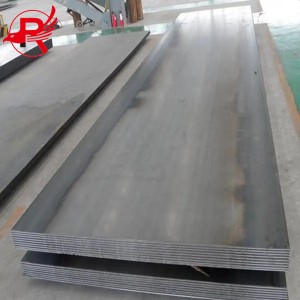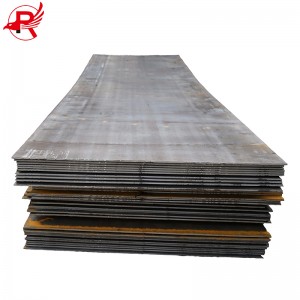2091506Factory Metal Space Frame Steel Structure Building Prefab Warehouse Commercial Prefabricated Steel Structures Building
Structural steel is a type of steel building structures material with a specific shape and chemical composition to suit the applicable project specifications.
Depending on the applicable specifications of each project, structural steel may come in a variety of shapes, sizes, and specifications. Some are hot-rolled or cold-rolled, while others are welded from flat or bent plates. Common structural steel shapes include I-beams, high-speed steel, channels, angles, and plates.

International Standards for steel Frame Structure
GB 50017 (China): General rules for design of steel structures This standard applies to design loads, detailing, durability and safety of steel structures.
AISC (US): The “bible” of design in North America, contains load provisions, structural and connection design.
BS 5950 (UK): Promotes an appropriate balance of safety, economy and structural efficiency.
EN 1993 – Eurocode 3 (EU): The standard for the harmonized design of steel structures in Europe.
| Standard | National Standard | American Standard | European Standard | |
| Introduction | With national standards (GB) as the core, supplemented by industry norms, it emphasizes the full process control of design, construction and acceptance | Focusing on ASTM material standards and AISC design specifications, we focus on combining market independent certification with industry standards. | EN series of standards (European standards) | |
| Core Standards | Design standards | GB 50017-2017 | AISC(AISC 360-16) | EN 1993 |
| Material standards | GB/T 700-2006、GB/T 1591-2018 | ASTM Internationa | EN 10025 series developed by CEN | |
| Construction and acceptance standards | GB 50205-2020 | AWS D1.1 | EN 1011 series | |
| Industry-specific standards | For example, JT/T 722-2023 in the field of bridges, JGJ 99-2015 in the field of construction | |||
| Required Certificates | Steel structure engineering professional contracting qualification (special grade, first grade, second grade, third grade) | AISC Certification | CE Mark, German DIN Certification, UK CARES Certification |
|
| China Classification Society (CCS) certification, steel structure manufacturing enterprise qualification certification | FRA certification | |||
| Test reports on material mechanical properties, weld quality, etc. issued by a third-party testing agency | ASME | |||
|
Specifications:
|
|
|
Main Steel Frame
|
H-section steel beam and columns, painted or galvanized, galvanized C-section or steel pipe, etc.
|
|
Secondary Frame
|
hot dip galvanized C-purlin, steel bracing, tie bar, knee brace, edge cover, etc.
|
|
Roof Panel
|
EPS sandwich panel, glass fiber sandwich panel, Rockwool sandwich panel, and PU sandwich
panel or steel plate, etc. |
|
Wall Panel
|
sandwich panel or corrugated steel sheet, etc.
|
|
Tie Rod
|
circular steel tube
|
|
Brace
|
round bar
|
|
Knee Brace
|
angle steel
|
|
Drawings & Quotation:
|
|
|
(1) Customized design is welcomed.
|
|
|
(2) In order to give you an exact quotation and drawings, please let us know the length, width, eave height, and local weather. We
will quote for you promptly. |
|

Steel Structure Sections
Standard sections are those described in published standards worldwide and there are also specialized/proprietary sections.
I‐beams (capital “I” sections — in the UK this includes universal beams (UB) and universal columns (UC); in Europe, this includes IPE, HE, HL, HD and more sections; in the US this includes wide flange (WF or W-shape) and H-shape sections)
Z-beams ( reverse half-flanges)
HSS (Hollow Structural Sections, also known as SHS(Structural Hollow Section); includes Square, Rectangular, Circular (Tubular) and Oval Sections) .
Angles (Section in shape of L)
Structural channels, C channel, or "C" sections
T Beams (T Shaped Sections) .
Bars are rectangular in cross-section, but are not wide enough to be defined as plate.
Rods are round or square sections with a length that is long relative to its width.
Plates are sheet metal that is more than 6 mm or 1⁄4 inch thick.

Steel structures are structures in which steel is used as the main load bearing element. And due to the high strength, light weight, fast construction and good seismic performance of steel structure, it has been widely applied in many fields. Its key areas of application are:
Civil Engineering
1. Industrial Buildings - Factories: machining, metallurgy, chemical plants and so on.
2. Warehouses: Large logistics and storage centers(such as high-bay warehouses and cold chain warehouses);
3. Civil Buildings - High-rise Buildings: Main frame of super-high-rise buildings ( e.g. skyscrapers) ;
4.Public Buildings: Stadiums, exhibition halls, theaters, airport terminals and so on.
5. Residential Buildings: Residential building with steel structure are applicable.
Transportation Infrastructure
1. Bridge Engineering - Long-span bridges - Railway/highway bridges
2. Rail Transit and Stations - High-speed rail stations, subway station concourses - Rail transit vehicles
Special Engineering and Equipment
1. Marine Engineering - Offshore Platforms: Main structures of oil drilling platforms (jacket, platform decks);Shipbuilding
2. Hoisting and construction machinery - Cranes - Special vehicles
3. Large Items and Containers - Industrial storage tanks - Mechanical equipment frames
Other Special Scenarios
1. Temporary buildings: disaster relief housing, temporary exhibition halls, prefabricated buildings, etc.
2. Glass dome supports for large shopping malls
3. Energy/business engineering – wind turbine towers (rolled high-strength steel plates) and solar panels.

Cutting Process
1. Preliminary Preparation
Material Inspection
Drawing Interpretation
2. Choosing the Appropriate Cutting Method
Flame Cutting: Suitable for thicker mild steel and low-alloy steel, ideal for rough machining.
Water Jet Cutting: Suitable for a variety of materials, especially heat-sensitive steel or high-precision, special-shaped parts.

Welding Processing
This process uses heat, pressure, or both (sometimes with filler materials) to achieve atomic bonding at the joints of steel structural components, thus forming a solid, integrated structure. This is a core process for connecting components in steel structure manufacturing and is widely used in buildings, bridges, machinery, ships, and other fields, directly determining the strength, stability, and safety of steel structures.
Based on the construction drawings or welding procedure qualification report (PQR), clearly define the weld joint type, groove dimensions, weld dimensions, welding position, and quality grade.

Punching Processing
This process involves mechanically or physically creating holes in steel structural components that meet design requirements. These holes are primarily used for connecting components, routing pipelines, and installing accessories. It is a crucial process in steel structure manufacturing to ensure component assembly accuracy and joint strength.
According to the construction drawings, state the hole position (coordinate dimensions), quantity, diameter, the amount of accuracy (e.g., ±1mm tolerance for common bolt holes, ±0.5mm tolerances for high-strength bolt holes) and hole type (round, oblong, etc.). Make hole location marks on the surface of the part with a marking instrument (steel tape measure, stylus, square or sample punch). Use a sample punch to make locating points for critical holes to help guarantee accurate drill locations.

A wide variety of surface treatment processes are available for steel structure building, effectively enhancing their corrosion and rust resistance, as well as their aesthetic appeal.
Galvanizing is a classic choice for its excellent rust resistance.
Powder coating offers rich colors and strong weather resistance.
Epoxy coating offers excellent corrosion resistance and is suitable for challenging environments.
Epoxy zinc-rich coating provides effective electrochemical protection with its high zinc content.
Painting offers flexibility and cost-effectiveness, meeting diverse decorative needs.
Black oil coating is an economical option for simple corrosion protection applications.

Our overseas top team who are skilled structural engineers and technical experts have plentiful project experience and leading design idea with strong knowledge of steel structure mechanics and related standards.
Driven by advanced design software such as Auto CAD,TEKLA etc, we establish a complete visualized design system of 3D modeling and 2D engineering drawing, which shows the details of dimension of each component,joint configuration and spatial layout. Our products and services are available for the entire project lifecycle, from master schematic design to detailed construction drawings, from sub-structure joint optimization to superstructure overall structural verification. We severely conduct details with millimeter-level accuracy, combine technical and rationality of construction.
We are always customer-focused. Based on all-round schemes comparison and mechanical performances simulating, we provide customized economical schemes facing various application environments (industrial factories, commercial buildings, bridges and plank roads ,etc.). Under the constraint of structural security, material consumption is reduced and the construction procedures are simplified. We offer full follow up package services including delivery of drawings to technical briefing on site. Our expertise guarantees the smooth execution of every steel building project, making us a reliable, single-source design ally.


The packaging method for steel structures should be determined based on factors such as component type, size, transportation distance, storage environment, and required protection. The goal is to prevent deformation, rust, and damage during transportation and storage.
The following is the packaging method of steel structure:
1. Bare Packaging(Un-packaged)
For: Large and heavy steel parts(like steel columns, beams, large trusses).
Features:Forget about any extra packaging layer, you can load and unload with lifting tools, directly. But components need to be firmly tied down in transport to avoid rattling/impacting.
Extra Protection: you can provide temporary covers or wrapping component connections (bolt holes, flange surface) to prevent intrusion and damage.
2. Bundled Packaging
Suitable for: Small medium regular shaped steel pieces (like angle steel, channel steel, steel pipes and small connecting plates) in bulk.
Note: The bundling should not be too tight. the bundling is too loose and the elements will shift, if too tight it may cause deformation.
3. Wooden Box/Wooden Frame Packaging
Applicable Scenarios: small precision steel parts (mechanical parts: high precision connectors, etc.), fragile parts (such as small parts like bolts and nuts) or steel parts needing long distance transportation or export.
Benefits: Great protection, isolation from the environment, environmental shielding, protection from long distance transportation in complex environment.
4. Unique Protection Packaging
For Anti-corrosion: When storing steel parts or in humid environment for transportation of steel parts, additional anti-rust processing is required other than above wrapping methods.
For Deformation Protection: When packing slender and thin wall steel (e.g. slender steel beam, thin walled steel member), use additional supports (wood or steel brackets) as packing material, to avoid the packing bending and deform by uneven weight during transportation and storage.

Transportation: Express (Sample Delivery), Air, Rail, Land, Train, Sea shipping (FCL or LCL or Bulk)

Beginning with your product delivery our team of experts is available to assist you with the installation providing a fastidious support. From developing onsite installation schedules, to technical shipping advice at critical milestones during construction, to working hand in hand with your construction team, we are committed to a smooth, exact installation that translates into a solid, safe, steel structure.
In the after-sales service stage of production, we offer the maintenance guidance according to the product feature, and reply for inquire about how to care for the materials and the life of structure.
If you have any problem of our products when you use them, the after sales team will give you a quick reply, with professional technique and responsible attitude to help you solve all the problems.

Q: Are u a manufacturer?
A: Yes, we are spiral steel tube manufacturer locates in Daqiuzhuang village, Tianjin city, China
Q: Can I have a trial order only several tons?
A: Of course. We can ship the cargo for u with LCL serivece.(Less container load)
Q: If sample free?
A: Sample free, but the buyer pays for the freight.
Q: Are you gold supplier and do trade assurance?
A: We 13 years gold supplier and accept trade assurance.













